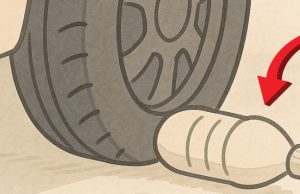10 Medicinal Plants Native Americans Used To Cure Everything (From Joint Pain To ᴄᴀɴᴄᴇʀ)

Cherokee Indians or Native Americans believe that the earth is endowed with healing for everything. Mother Nature has specific herbs for all diseases.
Here are some of the medicinal plants that were commonly used and foraged by the Cherokee tribe:
1. Mint
A light mint tea can soothe an inflamed stomach and aid digestion.
The Cherokee crush and bruise the leaves to use as a cold compress for pain or itching. Mint is also used as a remedy to help with nausea, fatigue, and allergies. Peppermint essential oil also has some amazing benefits. The smell alone will lift your spirits!
2. Yellow dock
The roots of this herb contain vitamins and minerals, which is great for detoxification. Traditionally, yellow dock is associated with hormonal balance and clear skin. For one, the leaves of yellow dock contain iron, and Native Americans used it as a laxative. In addition, the crushed roots mixed with hot water provide antiseptic properties.
3. Blackberry
This plump berry cluster has long been known by the Cherokee Indians to calm an upset stomach, among other things. Blackberry tea can be used to reduce swelling in joints, while chewing blackberry leaves can soothe sore gums. And the root also offers benefits. Blackberry root mixed with honey or maple syrup makes an all-natural cough syrup. Plus, blackberries are full of antioxidants that promote heart health and boost the immune system.
4. Cat’s Tail
Cattail is known for its antiseptic properties. It prevents anemia and gives relief from wounds and sores. It helps in the recovery process after any ailment.
5. Yarrow
Yarrow works wonders for superficial injuries. Its leaves prevent bleeding and infections. Yarrow tea cures kidney and gallbladder problems and aids in digestion. It is also a cure for amenorrhea, an absence of menstruation. It is a mild sedative for anxiety and treats mastitis, a common breast infection among those who are breastfeeding. It has been proven to be helpful for high blood pressure and asthma.
6. Sumac
This is another ᴄᴀɴᴄᴇʀ-fighting food and has several other qualities. Its berries are rich in vitamin C, which is antioxidant in nature and can be made into a drink. Sumac leaves help reduce fever. It has proven to be good for arthritis and respiratory diseases such as bronchitis, colds, and flu. Sumac balm reduces inflammation of the skin. Sumac seeds are effective against the Aspergillus fungus that causes lung infection.
7. Greenbiar
The Cherokees used greenbriar primarily to cleanse the blood. It also treats mild urinary contamination. It is abundant in starch and minerals. Often used in salads, its leaves are packed with vitamins. The bark, when made into a balm, treats wounds and mild burns. The berries can be eaten raw or made into jam.
8. Wild Ginger
Tea made from the wild ginger base treats intestinal gas and problem stomach. The Cherokees used the stems of this herb to cure ear infections. It is also beneficial for itching and snakebite.
9. Wild Rose
The fruit of the wild rose is called rosehips. The petals are mildly sedative, antiseptic, anti-inflammatory, and anti-parasitic in nature. It can also stimulate the liver; increase your appetite and circulation. If you get the flu; you can treat it with the wild rose. In addition, it is also a uterine tonic. The oil extracted from the petals can soothe your nerves and relieve pain.
10. Buckthorn brush
The roots of this plant have been used by the Cherokee Indians to improve kidney function and reduce inflammation. Researchers still believe today that this herb is a great natural treatment for high blood pressure. To make a tea, simply steep the leaves and flowers in boiling water for about five minutes, then drink.
Source: davidwolfe.com, simplecapacity.com















